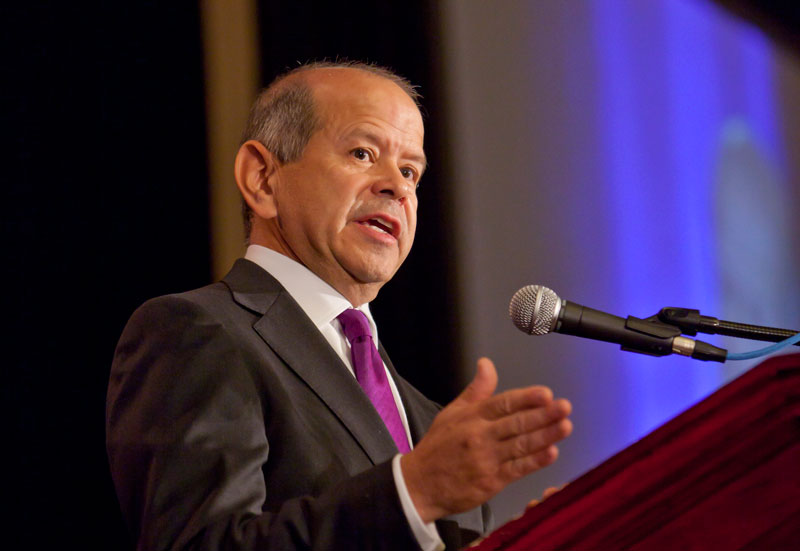 FAA Administrator Michael Huerta addressed a full house to discuss the future of drone integration at AUVSI’s Xponential conference.
FAA Administrator Michael Huerta addressed a full house to discuss the future of drone integration at AUVSI’s Xponential conference.
The FAA spokesperson began by talking about the extreme rate of change and development in the drone industry. “We’ve come a long way from where we were just a few years ago,” says Huerta. “…the combined sales of [drones] could surge to over 7 million by 2020…New developments in this industry emerge in the blink of an eye.”
The FAA is clearly changing their approach to emphasize collaboration with the industry and other stakeholders. Saying that drone integration meetings have begun to feel like “family reunions,” Huerta tried to include the drone industry in his list of successes. “When I say ‘we’ I’m not talking about the FAA, I’m talking about all of us… the safe integration of UAV is a common goal.”
Huerta says that the collaborative approach has resulted in the development of a comprehensive plan for drone integration which they “expect to unveil soon.” He continued to emphasize that the FAA is changing and moving more quickly: “We need to evolve in our approach… because the world around us is evolving at breakneck speed… We need to become ever more nimble,” he says. “there may be more than one solution [to challenges.]”
It was no surprise after the introduction that the FAA’s big announcement was the development of a broad based drone advisory committee, designed to be a long lasting group that will serve the same purpose as the Next-gen advisory committee. Huerta says that the first goal of the committee will be prioritization of goals for regulation; he expects that the first meeting will take place “sometime this summer.”
Intel CEO Brian Krzanich will chair the advisory committee. Krzanich is an excellent choice for the FAA, forestalling criticism from both sides of the drone integration issue. Intel is heavily invested in the drone industry; and Krzanich, in addition to being a voice in Silicon Valley innovation, is also an airline pilot. Intel had previously warned legislators that drone regulations could push them out of the US if they did not support the industry.
After announcing the drone advisory committee, Huerta reminded the industry that regulations had include privacy and safety considerations in order to be successful, and called on stakeholders to help develop solutions. “Safety is a shared responsibility… you have to pour some of your own energy into developing safety solutions on your own.”
The FAA has made changes recently demonstrating a shift in speed and policy of drone integration. The agency has issued significantly more Section 333 Exemptions in the last several months, formed a task force to address flight over people, and held conferences with drone industry stakeholders in an attempt at greater collaboration.
The agency has been under pressure from lawmakers and the drone industry to release the Small UAS Rule, which was due in September of last year but is now expected to be released next month.
Miriam McNabb is the Editor-in-Chief of DRONELIFE and CEO of JobForDrones, a professional drone services marketplace, and a fascinated observer of the emerging drone industry and the regulatory environment for drones. Miriam has penned over 3,000 articles focused on the commercial drone space and is an international speaker and recognized figure in the industry. Miriam has a degree from the University of Chicago and over 20 years of experience in high tech sales and marketing for new technologies.
For drone industry consulting or writing, Email Miriam.
TWITTER:@spaldingbarker
Subscribe to DroneLife here.







[…] → FAA Sees Drone Sales Surging; Intel CEO to Chair New Advisory Panel […]